I wanted to love this camera so desperately. When I first looked at the X-M5, I was won over by its handsome design and compact nature. And the world needs more stylish little cameras like this, which are within the reach of most people’s budgets. However, we might lose too much to make this lower $799 price possible. Most of the technical specs and features were covered in a previous video and subsequent article, but I want to focus on the make-or-break features today.
When we did our initial review, there was a lot to love, but we didn’t expect the camera to be as popular as it was or to get the views that it did. It is a very capable video camera, but as I tested the production version of the X-M5, I began to wonder if there is another camera that appeals more to the photographer and videographer alike within the same price range. A better camera might already exist, and we will find out together.
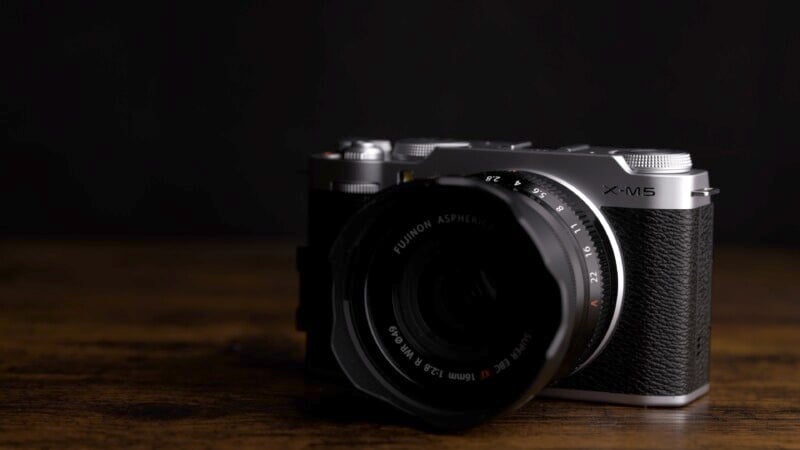

Fujifilm X-M5 Revisited: My Main Complaints
The controls are decent, and the sensor is a proven winner, but there is no EVF, the screen is lackluster, and there is no IBIS.
The lack of an EVF is the biggest detraction, especially as my eyes aren’t getting any younger. However, an EVF is always useful when composing in bright sunlight or evaluating your images after taking them, regardless of age. Not everyone will value an EVF as highly as I do, and an EVF does make the camera slightly larger and more expensive. But if the X-M5 had an EVF, I would consider it for myself as a compact walk-around camera and even as a popular alternative to the X100-series cameras.
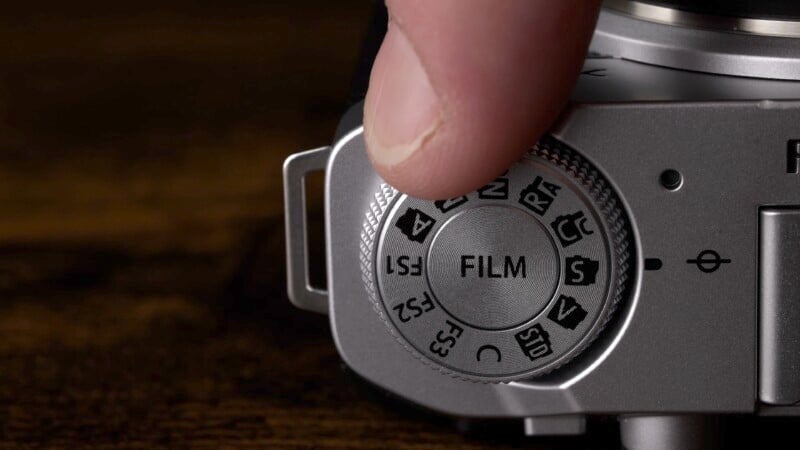
The lack of IBIS is one of the major complaints on the X-M5 but then if you look at any of its contemporaries like the Sony a6400, Canon EOS R10, or even the Fujifilm X-T30 II, none of them have IBIS either. Even the latest Nikon Z50 II lacks any built-in image stabilization. You have to go up to the significantly more expensive Fujifilm X-S20 or Canon EOS R7 to get this important feature.

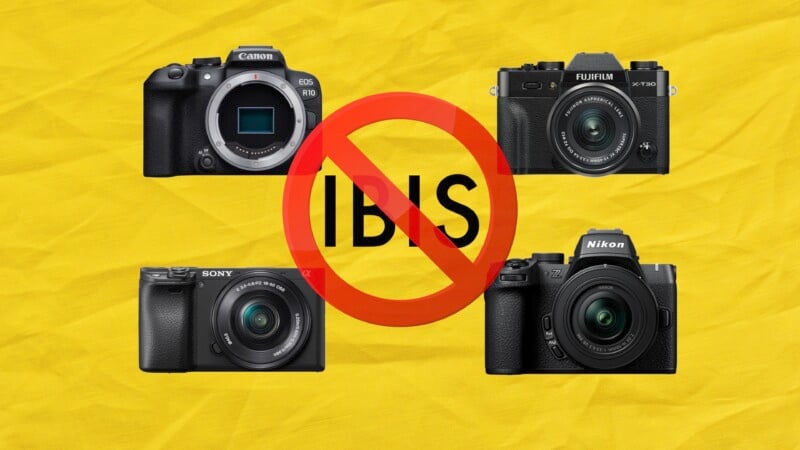
While researching for our video review we started to see the bigger overall picture, which is the complete lack of IBIS in any camera within the APS-C market at this price. Most of the time, I think users will have stabilized lenses on the X-M5 or will mount it to a gimbal due to its incredibly small size. If you want to get IBIS at this price, you’ll have to compromise on a smaller Micro Four Thirds camera or look at the used market.
Fujifilm X-M5 Revisited: A Beautiful Design
As a photo camera, I like the size and design of the X-M5. The film simulation mode dial makes lots of sense on an entry-level camera like this, and the dials and controls are usable for most people’s needs. Despite the relatively small amount of real estate on this camera, it provides complete manual control without having to share dials and a handy autofocusing joystick. You also get both mic and headphone jacks, although the choice to put the mic jack where the EVF would naturally go has fooled more than one reviewer into attempting to compose through the mic jack cover.
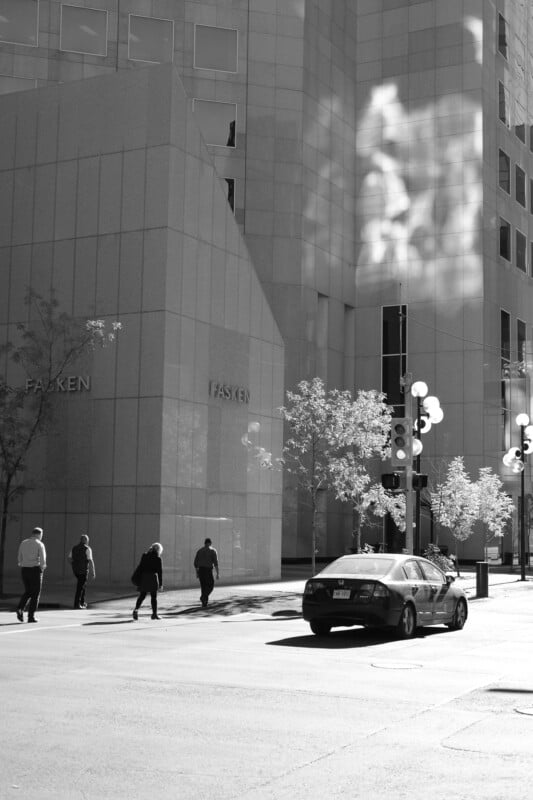
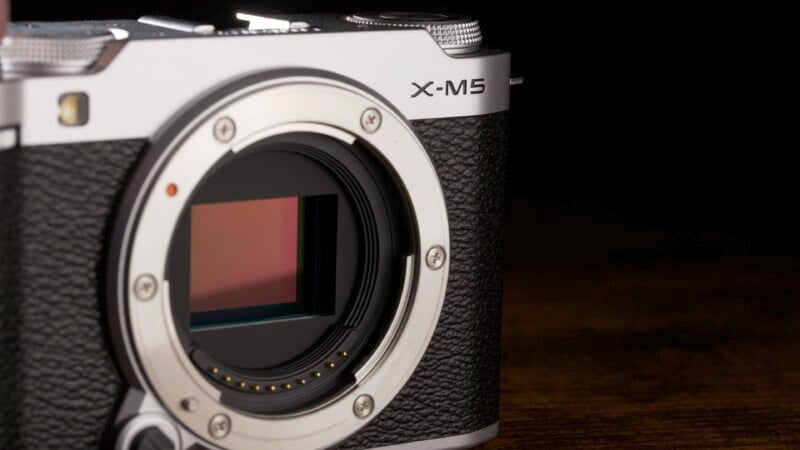
Regarding autofocusing performance, Fujifilm unfairly gets a bad rap, but you must differentiate between photo and video modes. We compared the AF against the Canon EOS R10, which I have used extensively for wildlife shooting, and the hit rate was almost identical. The X-M5 let slip a couple of frames, but its overall performance was very similar to that of its competitors and was perfectly usable for most situations. Remember that the X-M5 uses Fujifilm’s latest autofocus algorithms, putting it above some older cameras in Fujifilm’s lineup.
It doesn’t have the large grip to balance longer lenses and the lack of EVF means I would not use it with telephoto glass if I could avoid it. However, as a travel camera shooting on the streets or for the average family outing, it is more than capable of capturing good memories. Even if the body design isn’t up to specific tasks, the autofocus system certainly is.

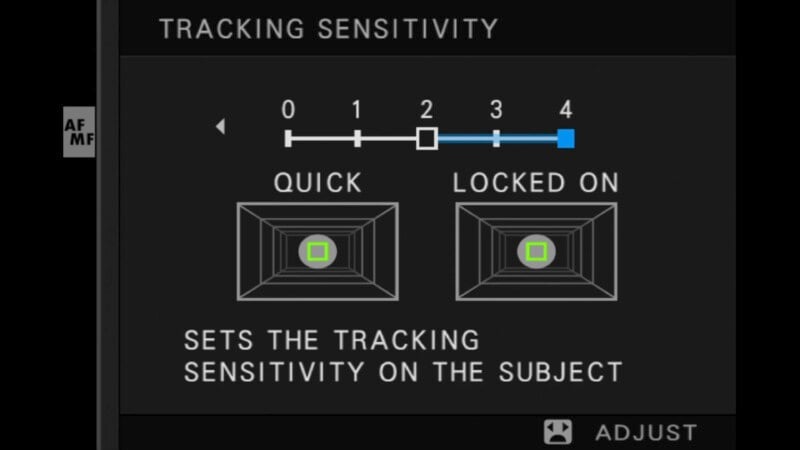
I most assuredly appreciate having a true mechanical shutter in the X-M5. This not only maintains all the dynamic range that its 26-megapixel sensor is capable of but also eliminates any rolling-shutter problems that would plague a camera like the Sony ZVE10 II.
Fujifilm X-M5 Revisited: Purpose-Built For Video
As a video camera, there is nothing else comparable in price to the X-M5, that will give you 10-bit log recording with 6.2K open-gate recording. However, Fujifilm struggles when it comes to autofocus consistency in video. Often, the camera will shift focus to the background or drift off before reacquiring the subject, which can be annoying. You can adjust the default settings to make the tracking sticker but it remains inmperfect. The lack of IBIS also plays a part by not mitigating distracting camera shake when handholding the X-M5, even if you utilize digital image stabilization.

The X-M5 manages heat incredibly well. Even recording 6.2K open-gate recording at 30 frames per second, the X-M5 went for an hour and fifteen minutes until it needed to stop, and frankly, the battery was empty by that point anyway. At 4K/60p, the X-M5 overheated within forty minutes, a still respectable amount of time for this affordable of a camera. If you need roughly double the time, you can attach the Fujifilm cooling fan accessory.
The closest video competitor is going to be the Sony ZV-E10 II which provides excellent quality recording as well with a more consistent autofocusing experience and may be the better choice for vlogging purposes. However, if you want rich open-gate recording and are going to largely use manual focusing on a gimbal, the X-M5 is better suited. The Nikon Z50 II offers good AF and 10-bit log record modes, but the older sensor suffers from rolling shutter issues.
Fujifilm X-M5 Revisited: A More Balanced Approach
The Fujifilm X-M5 gets some stuff right but lacks the few essentials that I would want to make it an ideal entry-level camera. The Fujifilm X-T30 II is an excellent design with retro-inspired controls and has an EVF. It might not have the same video capabilities, but I would probably still choose the X-T30 II over the X-M5.
Likewise, the Canon EOS R10 is an overall excellent entry-level camera with good autofocus, an EVF, and a comfortable — if somewhat bulky — body design. It feels more like a lightweight DSLR and is much better suited to wildlife shooting with longer lenses but it lacks heavily when it comes to comparable video quality.
Even the older Sony a6400 has comparable AF results and a very compact design, all with an EVF. It also autofocuses more consistently in video mode.
Although the Nikon Z50 II kit will be the most expensive option, it has features that make it an excellent hybrid camera. Its main issue will be the older sensor. From a handling standpoint, I like the Nikon, but the X-M5 will take slightly better photos.

If you get the Fujifilm X-M5 with the basic XF 15-45mm f/3.5-5.6, you’re looking at a price of $899. This is still slightly less than most of the competitive camera kits on the market and the X-M5 is easily the best video-based camera of the bunch. If you can live with spotty AF in video and the lack of an EVF it is an excellent little hybrid camera but if you want a more balanced approach it might be worth looking elsewhere.
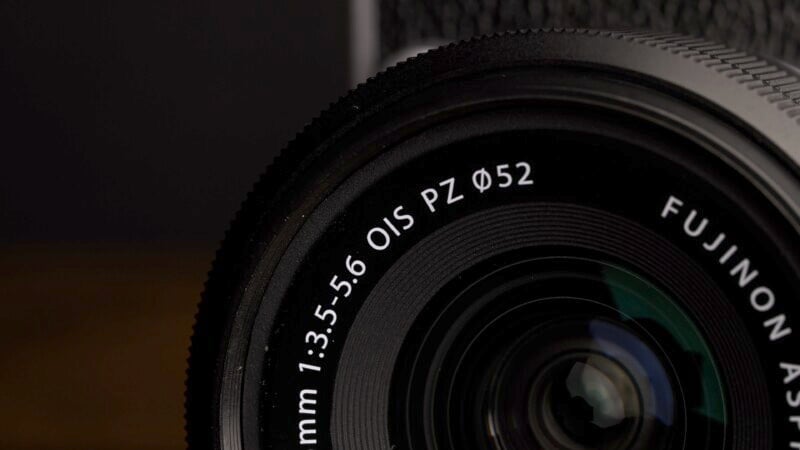
Are There Alternatives?
As stated, the chief competitors will be cameras like the Sony a6400, Canon EOS R10, Nikon Z50 II, and Fujifilm’s own X-T30 II. The Sony is getting older but has a similar form factor. Canon offers a better photographic experience but with limited video capabilities. The Nikon is very well-balanced and can handle most situations. Finally, the X-T30 II features a very fun and capable handling experience at the expense of some focusing ability and video modes.
Should You Buy It?
Maybe. If you are into the more video-side of the hybrid experience or don’t feel that an EVF is needed, the X-M5 is an excellent choice on a budget. If you are looking for a great entry-level photographic camera and want an EVF, there are better options.
